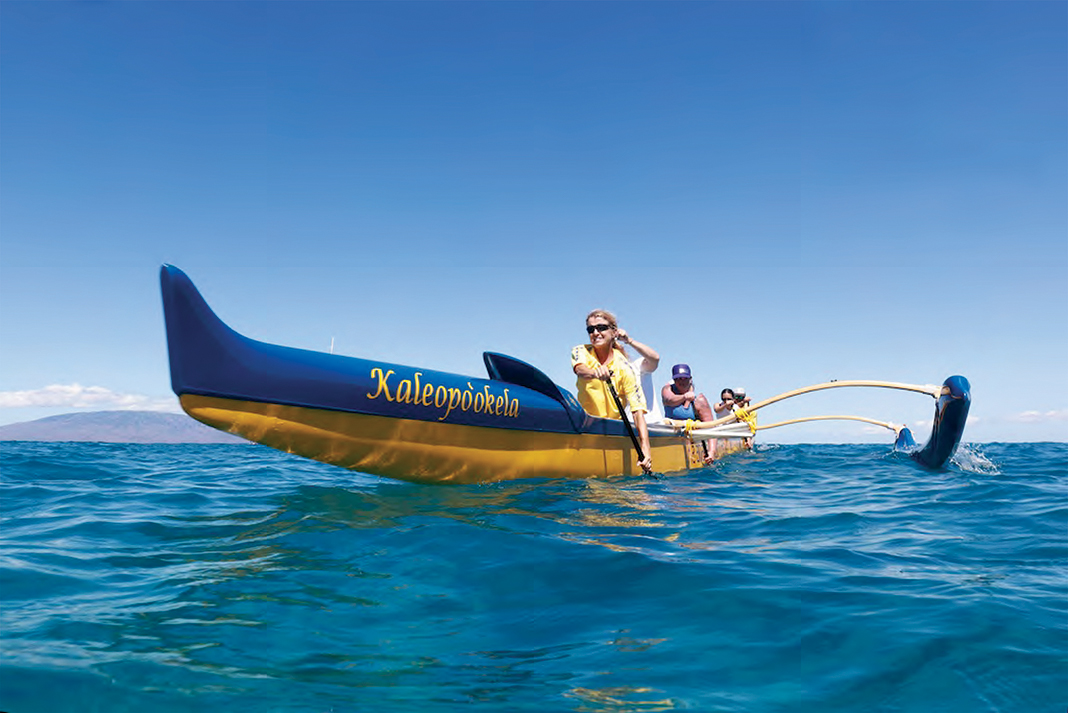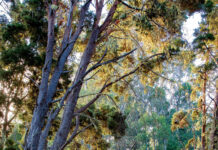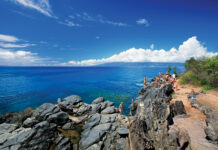
This ancient skill is very much alive today, and most people experience outrigger canoe paddling as part of an organized club. Teams gather to train, each athlete learning to pull her weight and match the stroke of the person in front of her. During regatta season, canoe clubs from across the archipelago—and the world—congregate to compete in fierce sprints and long-distance races.
Iokepa spent more than two decades coaching for Hawaiian Canoe Club, so he knows what it takes to transform beginner paddlers into champions. I know, too—I was once a wide-eyed novice, clutching her paddle on the shores of the club’s headquarters at Kahului Harbor. I grew up around canoes, and competed in races in my youth, so standing next to this vessel sparks memories of salty, sweat-drenched practices. Today’s crew, though, includes several who have never touched a paddle before. At first look, there doesn’t seem to be much to it—hop into the canoe, dunk the paddle blade, pull it towards you, repeat. In reality, outrigger paddling requires serious technical skills, strength and stamina.
Before we exercise our bodies, Iokepa challenges us to stretch our minds with a canoe anatomy lesson. We repeat in unison as he points to the ‘iako (boom) and ama (float), which are lashed to one side of the boat to balance the weight of the six crew members. He details how to grip the paddle, modeling ideal body form and stroke.

Sensing unease from some of our group, he offers a smile and encouragement, “I don’t expect anyone to master this today—but it’s important to know the proper way to paddle.”
In fact, good form is rooted in some serious science, and competitive paddlers tweak their body mechanics with equal parts precision and obsession. Iokepa instructs us to remember this, if nothing else: “Timing is everything.”
The best teams paddle perfectly in sync, arms extended and shoulders curved to help them execute short, quick strokes. The person in the front sets the pace, the last paddler steers. Everyone follows the commands of the person in the third position, who calls out to signal when paddlers should switch from the left side to the right.
Today isn’t just about gawking at pretty vistas (though we do). It’s a cultural immersion through action. Hauling the 450-pound canoe from dry land to shore, we learn laulima, the Hawaiian value that translates as “many hands working together.”
“This is not a canoe ‘ride,’” says Iokepa. “It’s a hands-on activity where everybody does their part.”





